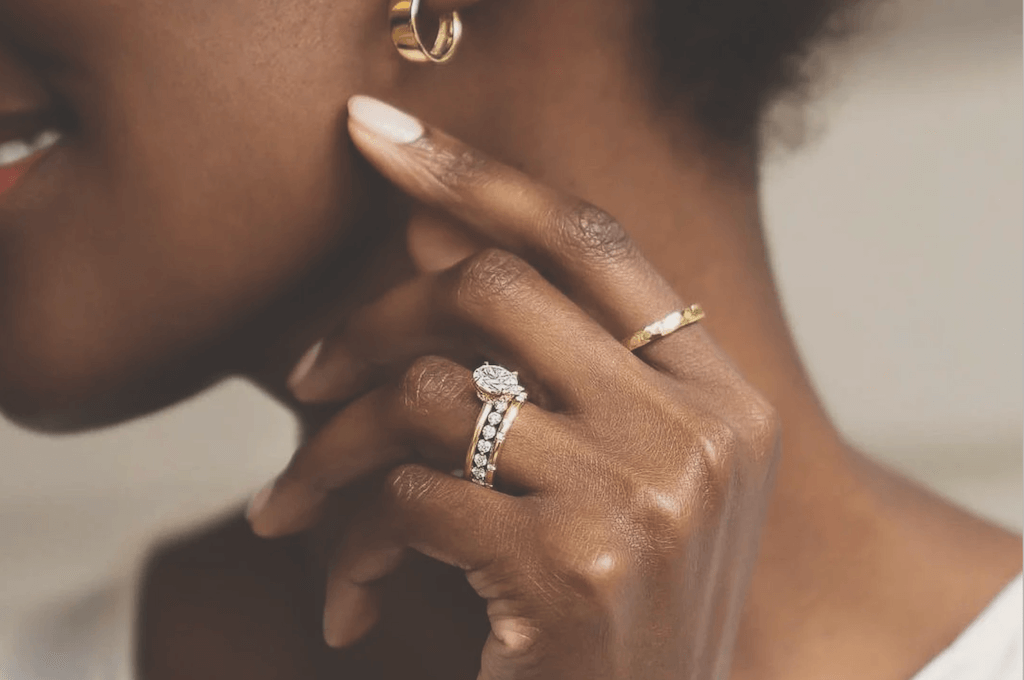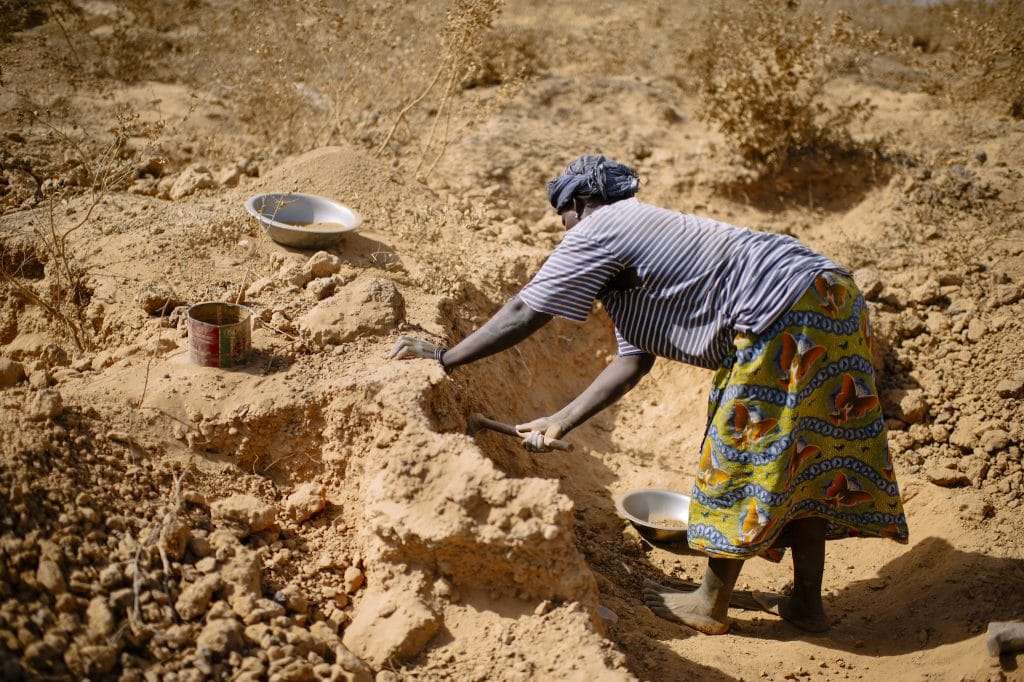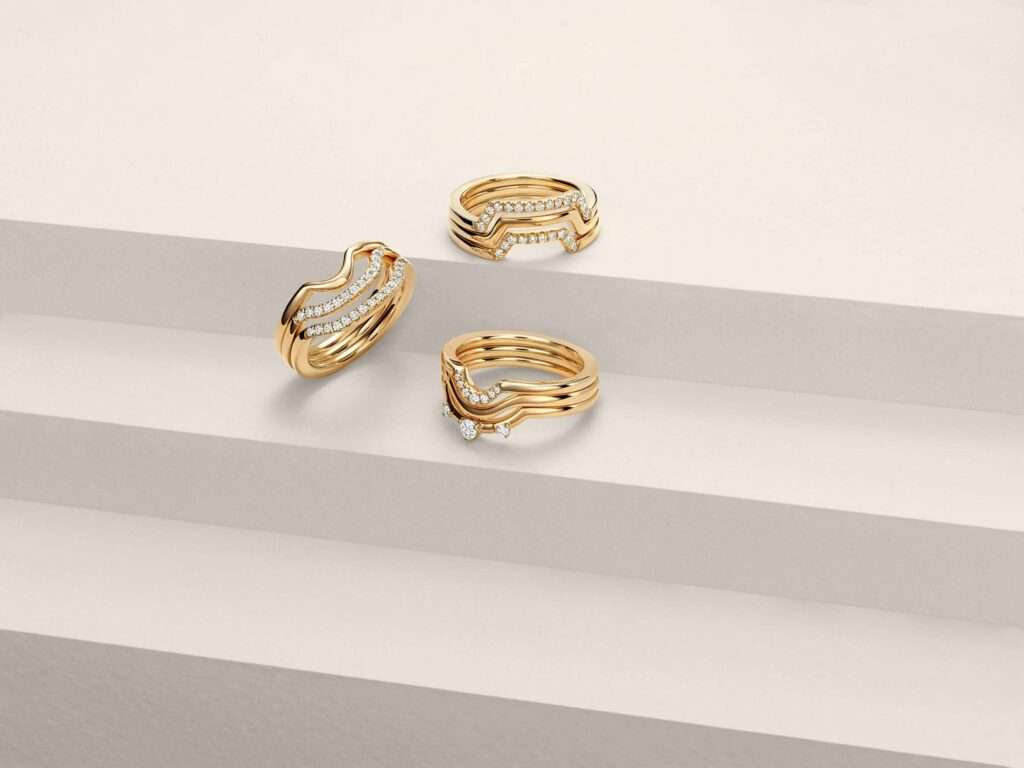In its quest to deliver the most ethical jewelry, Brilliant Earth has embraced a number of key practices, critically: lab-grown diamonds and responsibly mined gems, including its “Beyond Conflict-Free” mined diamonds.
But its 2022 Mission Report details a string of other commitments including efforts to reach carbon neutrality, converting to 100 percent recycled paper packaging and FSC-certified wood. Its made advances in DEI initiatives, with nearly half of its workforce identifying as BIPOC and more than 75 percent identifying as women.
The company says it sources natural diamonds from approved mines with strong social and environmental governance practices in Botswana, Namibia, Lesotho, South
Africa, and Canada, which are ranked low or moderate risk.
And while the leading legacy jewelers have yet to adopt lab-grown diamonds, they continue to gain popularity due to the efforts of companies like Brilliant Earth, which brings affordable pricing to classic and modern designs using lab diamonds.

“We have spent the last year building on our progress and finding new opportunities to drive our Mission forward,” co-founder and CEO Beth Gerstein says in Brilliant Earth’s 2022 Mission Report.
Brilliant Earth is a member of the Supplier Ethical Data Exchange (Sedex), which audits 92 percent of lab-grown diamonds for safe working conditions. And without industry standards for ethical lab-grown diamonds, Brilliant Earth created its own standards. The company’s Truly Brilliant lab diamonds are made using sustainable production practices, such as renewable energy or Renewable Energy Credits.
It also has a strict commitment to recycled precious metals, “we do not use so-called ‘dirty gold,'” the company says. “Dirty gold” mining has a history of civil war and is
one of the most environmentally destructive types of mining. It also often pays miners low wages in dangerous working conditions. It also increased its commitment to Fairmined gold by 27 percent last year. ” Over the last year, our grant partnership with Pure Earth and the Alliance for Responsible Mining has supported the Fairmined certification of mining association AMATAF in Madre de Dios, Peru,” reads the Mission Report.
But it’s Brilliant Earth’s work with artisanal and small-scale mining (ASM) operations that may be even more noteworthy.
Gemstone mining
ASM is an important source of livelihood for millions of people worldwide, but it often faces challenges such as unsafe working conditions, inadequate equipment, and unfair pay. Brilliant Earth has partnered with Moyo Gems —a responsible women-focused miner-to-market gemstone collaboration founded in East Africa in 2019. It’s working to address the industry’s issues and create more equitable and sustainable supply chains for its miners and partners. (The word Moyo means ‘heart’ in Kiswahili, which is why they say Moyo gems are ‘from the heart.’)
To be a Moyo, miner, women must be members of TAWOMA, the Tanzanian Women Miners Association. They also need to attend safety and health trainings by its nonprofit partner, Pact. From there, they’re invited to begin selling to international buyers at the Market Days held near their villages.

TAWOMA, which partially operates Moyo Gems alongside Pact, is run by women miners themselves. There are more than 3,000 members across Tanzania, where women mine for gemstones and gold.
According to Pact, some women mine alone, while others mine in small groups, or directly alongside men. About 60 percent of all Moyo Gems miners are women, and the remaining are their male allies.
Last year, Pact expanded the Moyo Gems program to Kenya and is partnering with a women miners’ association there, called AWEIK. The Brilliant Earth Foundation supports the Moyo Gems linked social programs, such as economic empowerment, literacy programs, and gem-faceting workshops, in both Kenya and Tanzania.
Ethos caught up with Cristina Villegas of Pact, the development non-profit that works with Moyo to learn more about the program, its partnership with Brilliant Earth, and how consumers can help make efforts like these more available.
*This interview is edited for length and clarity
Ethos: Could you share a bit about Moyo and what makes the company so special?
CV: Moyo Gems has been life-changing for these miners, who make between three to ten times what they would earn otherwise. The NGO Pact and the Tanzanian Women Miners’ Association have confirmed the miners’ licenses, make sure miners receive ongoing health and safety education, and trace the gemstones from responsible miner to market via blockchain.
Our traceability is such that Moyo Gems can tell you the name of the miner who mined your gem. Pact — through its 501c3 status — also channels philanthropic investments back into these gem-producing areas. So the women miners have expanded predictable markets to sell their gems, and their communities are receiving funneled investments designed to help them thrive. Brilliant Earth is one of the unique companies that both buys the gemstones and expands its highly-local social impact through its Foundation.
Ethos: What type of advantages does this provide the local community beyond the women?
CV: In addition to receiving top prices for their gemstones, local women and men miners receive free gemology training to help them understand their materials and free occupational health and safety training to help keep them safe at work.
Further, Pact has rolled out its award-winning economic empowerment program called “WORTH”, which promotes savings, community banking, and new business ventures designed to diversify the economy and help prevent it from the kinds of economic shocks that we saw during the pandemic.

For younger women who have completed high school, Brilliant Earth is co-funding a new gem-cutting workshop, which will promote value addition into Moyo Gems and other supply chains.
Ethos: Are the women paid premiums, and if so, how does that differ from norms?
CV: Moyo Gems pays significantly more for the gemstones produced by shortening the supply chain and by adding value to the gemstones through due diligence, traceability, and deep storytelling.
Moyo follows Gemworld’s Gem Guide wholesale pricing and charges the higher end of the pricing guidance because of the quality of the gems and the OECD-aligned due diligence behind them. This higher pricing cascades down to the women miners who are at the center of the program. So it is not a premium per se, rather, it is appropriate pricing for responsibly-produced gemstones from now-thriving communities. We’re so proud that so many reform-minded brands stand behind that philosophy.
Ethos: How can a consumer be sure they’re getting responsibly sourced gems like Moyo’s?
CV: The vast majority of colored gemstones sold anywhere are not traced. Gemstones flow to major trading centers, are then co-mingled, and then resold. The miner is lost in all of that. Without traceability to at least the country of origin, companies do not know what story they are supporting. It could be a benign story or it could be an awful one.
Moyo Gems, and our handful of sister programs, are truly exceptional initiatives that stand clearly apart from the status quo. Moyo Gems proves that radical traceability is possible in colored gemstones mined by artisanal and small-scale mining (ASM) communities, which are responsible for 80-90 percent of all colored gemstones produced each year.
Unless it’s traceable, consumers truly do not know what they are getting. Our bet is that consumers want to know where their gemstones come from and to be confident that their gemstone has been a force for good.
Visit the Moyo website for a list of the studio jewelers and larger companies using these industry-changing gems.
Related on Ethos:


